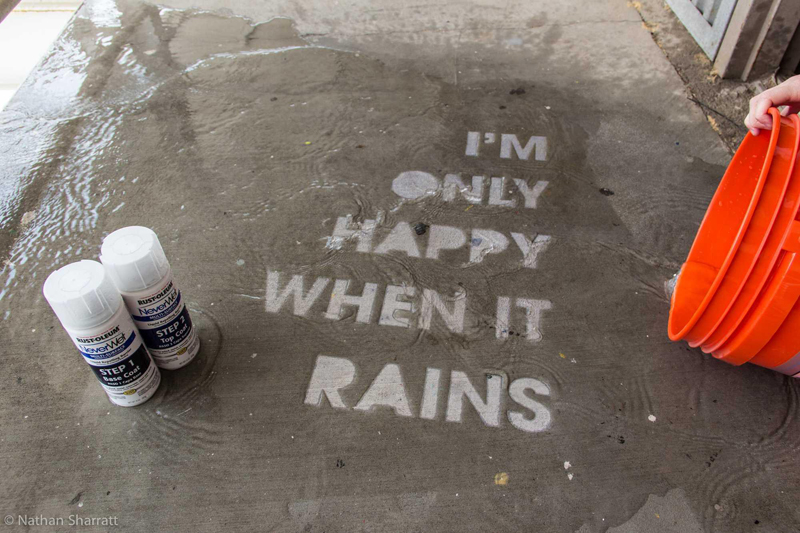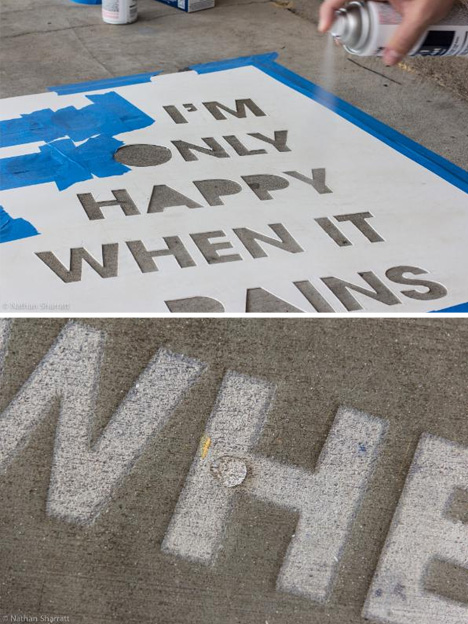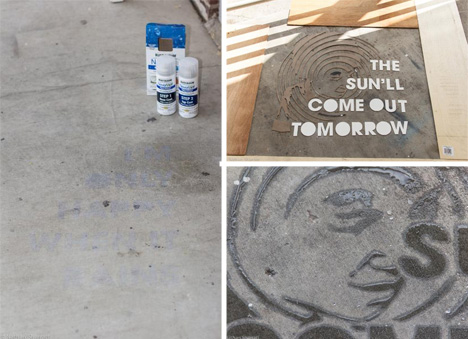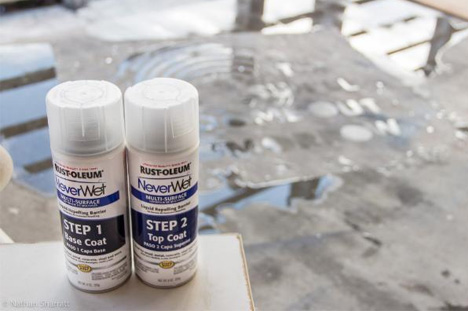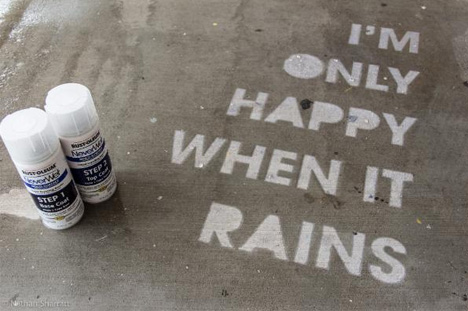NeverWet has been making headlines as the silicon-based spray that repels liquids from clothes and electronics, but this off-book use shows another fascinating application that may be even longer-lasting: urban art invisible until poured upon.
As part of a Home Depot competition, Nathan Sharratt decided to create stencils and spray hydrophobic NeverWet onto streets and sidewalks, resulting in areas of deflected moisture surrounded by soaked concrete. Like invisible ink, the water-repellent areas remain hidden until another liquid is applied (instructions at the end below).
Given criticism of NeverWet when applied to shoes (apparently it can discolor or leave residue) and phones (touchscreen and durability issues have been reported), this may prove to be a more persistent, if unintended, long-term application of the product.
And for any interested subversive artists, it could prove a unusual boon when bothered by police: how will the authorities justify arresting someone for spraying an invisible coating on a public surface? Meanwhile, best of luck to Nathan in the contest – a win here is surely deserved! As one reader noted: there are practical and legal street applications of this too, potentially: “Instead of a sign saying slippery when wet… graffiti saying slippery.” That, and consider: sidewalk happy-hour signs for drink specials in the rain, or way-finding messages for seeking shelter in a storm. Many interesting possibilities.
Short-form instructions for those looking to (officially: don’t!) try this at home or in the neighborhood: “Step 1: You need a stencil. You can do something simple or use an image that includes a fair amount of detail. I created my own stencils from cardboard, but there’s no reason you can’t use a ready-made or store-bought stencil. Just know that NeverWet will get sprayed on that, too. Step 2: Place stencil on concrete. I recommend that you only try this on light-colored concrete for best results. Step 3: Spray the NeverWet into the cut-out areas of your stencil according to the manufacturer’s instructions found on the label. I did two base coats and two top coats.”
